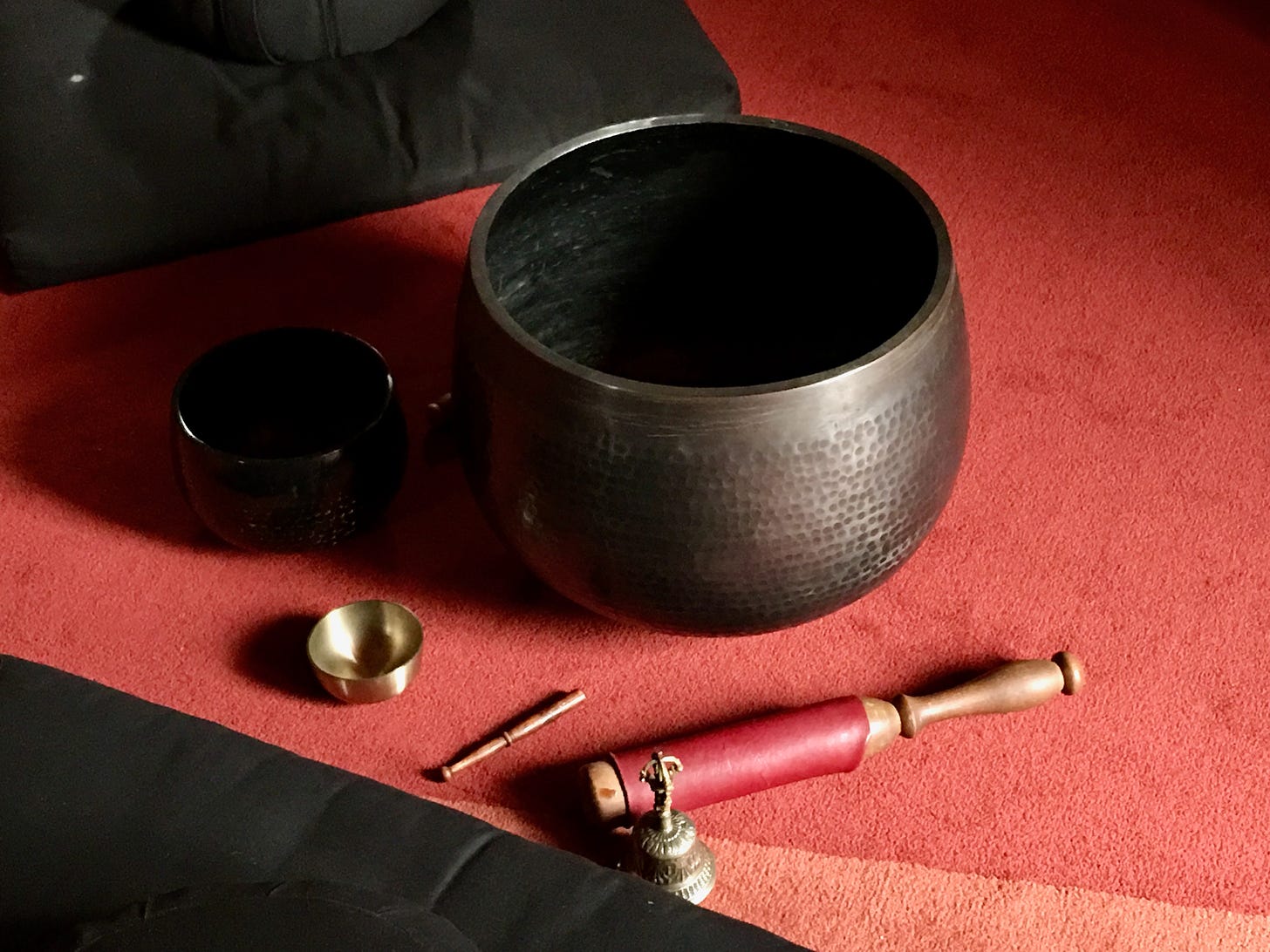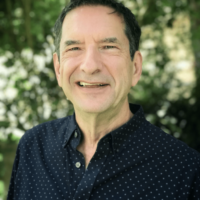Listen to Alan read this post.
Stillness. Quiet. Rest. Reflection. Peace.
Just writing those words starts to slow my system down. If I combine them into a spacious mantra, the mantra then becomes a kind of sweet balm or healing salve. I breathe more deeply; my body relaxes into the fullness of the moment. My whole being settles. A space is created that allows for contemplation—a practice of intentional observation, consideration, and reflection—being fully present with all my inner and outer senses as I bring my focus to what is asking for my attention.
William McNamara, a 21st-century American Jesuit priest and mystic, defined contemplation as “a long loving look at the real.” That description becomes, for me, a powerful invitation to look long and lovingly at the realities of my life, of our world. He went on to describe it as “a pure intuition of being, born of love.”
Richard Rohr, the founder of the Center for Action and Contemplation in New Mexico, describes contemplation as “a kind of seeing that is much more than mere looking.” He says, “The contemplative mind does not tell us what to see but teaches us how to see what we behold.” We say something similar about Transformational Presence—it doesn’t tell us what to think; it expands how we think and sense and perceive. Richard Rohr encapsulates all of it: “Contemplation allows us to see the truth of things in their wholeness.”

For me, contemplation is an intentional act that begins with slowing down and quieting the mind and body to make space for focus and stillness. And then to be present in that stillness for perhaps longer than is your usual practice. Intention is the key. It’s not “thinking about your feelings,” but rather “feeling the deeper layers and meaning of your thoughts.” For many of us, the deep inner chambers of our being are longing to be seen, felt, and acknowledged. In our fast-paced lives, we cover a lot of ground on the outside, yet too often give little attention to our inner world—to our souls, to what really matters deep in the heart of our being.
We need time and space to process all that is happening around us and within us—dedicated time and space to come to stillness, first on the outside so that then we can come to stillness on the inside. Within the stillness, we can then find quiet. In the quiet, we can find rest for the mind, body, and soul. Rest allows us to tap into deeper resources within, giving us the ability to reflect without judgment. Extended periods of reflection open to greater understanding, helping us find our way to peace in our hearts.
All of this is not so much something that we do as it is something we allow—something we make space and time for. Together, stillness, quiet, and rest have a way of opening doors to reflection, awareness, connection, and understanding within us.
Tenzin Priyadarshi, president and CEO of the Dalai Lama Center for Ethics and Transformative Values at Massachusetts Institute of Technology, says that all human beings are contemplatives. Questions about meaning in life or purpose are contemplative questions. “Being a contemplative is not necessarily to be religious or spiritual—being contemplative is being human.”
Being Fully Present—A First Step
Buddhist monk and peace activist Thich Nhat Hanh taught:
Drink your tea slowly and reverently,
as if it is the axis on which the earth revolves.
—Thich Nhat Hanh
In other words, he’s asking us to be intentional in how we live. To set an intentional tone for our lives by how we do the simplest things and how we show up in the simplest ways. This intentional way of living opens space for contemplation to become an integral part of our lives. Over time, it pours out into the collective consciousness, encouraging a greater sense of stillness, quiet, rest, reflection, and peace in the world around us.
A first step in developing a practice of contemplation is to slow down and create space for stillness. It may take some time—that’s ok, it’s a practice. Be gentle with yourself and stay with it. Find a quiet physical space and make it your own, even if only for five minutes at first. And if five minutes feels too long, start with two minutes. Then over the next several weeks, gradually extend your quiet time to 15 or 20 minutes. Of course, longer is fine if you wish. Let it happen naturally. As you settle more easily into the stillness and quiet, allow that which longs for your attention to find you. Don’t worry about what to focus on or how it will find you. If you create space and time, what wants your attention will show up.
When something asks for your attention, allow yourself to rest in the act of intentional contemplation. That may seem like an odd concept—to rest in an intentional act. We’ve been conditioned to think of “rest” as wasted or unproductive time. Yet it is the key to what contemplation is all about. It’s not about analyzing or “thinking about” or strategizing. Instead, it’s about resting in the process of being present with what wants your attention without having to solve it or change it. I can’t tell you more about what your personal process will be; you will have to discover that for yourself.
So, let it be. Let it come to you. Let what wants your attention communicate with you however it does. Give it time and space. Rest in presence. Rest in your breath. Rest in stillness and quiet. Trust that if you rest there, reflection will come on its own. What wants your attention will show up. And when it does, let it communicate with you however it does, and simply remain present with whatever it shows you. You don’t have to do anything with it; you only need to be with it.
When you approach reflection and contemplation from a place of stillness, quiet, and rest, peace has a way of showing up as well. It may not happen right away, and it may not show up in the way you expect it. Yet again, give it time and space. When you remain in quiet and stillness and rest in reflection and contemplation, a greater wisdom has a way of quietly leading you through challenges, hurts, fears, and disappointments towards a place of acceptance, greater clarity, and ultimately, peace.
It’s ok if your rational mind has a hard time grasping this concept. Trust that your heart and your belly understand and let them take the lead. Peace may not come right away; it may need some time and space. Yet if you are willing to stay with the process—to keep resting in the act of contemplation—the space between you and whatever is asking for your attention will begin to soften. As it does, you may begin to see or sense beyond your habitual thoughts and emotions and start to recognize patterns and connections you hadn’t noticed before, or at least hadn’t paid attention to. You might even discover a part of you that is asking to be appreciated, respected, or at least acknowledged without judgment. Deeper layers start to reveal themselves.
Resting in the Stillness and Quiet
The key is to rest in the stillness and quiet, and in the act of contemplation itself. If you busy your mind by talking to the object of your focus and trying to figure something out, you are not likely to find stillness and quiet. That is not contemplation. That is problem-solving or trying to make something happen. Contemplation involves listening to the object of your focus—letting it talk to you, letting it show you what it wants you to know.
Stillness. Quiet. Rest. Reflection. Peace.
Life is full. Some things ask for attention from within. Set aside time and space. Allow what wants your attention to find you. Rest in contemplation. Breathe more deeply into life. And take Thich Nhat Hanh’s teaching to heart:
Drink your tea slowly and reverently,
as if it is the axis on which the earth revolves.
~ ~ ~





































